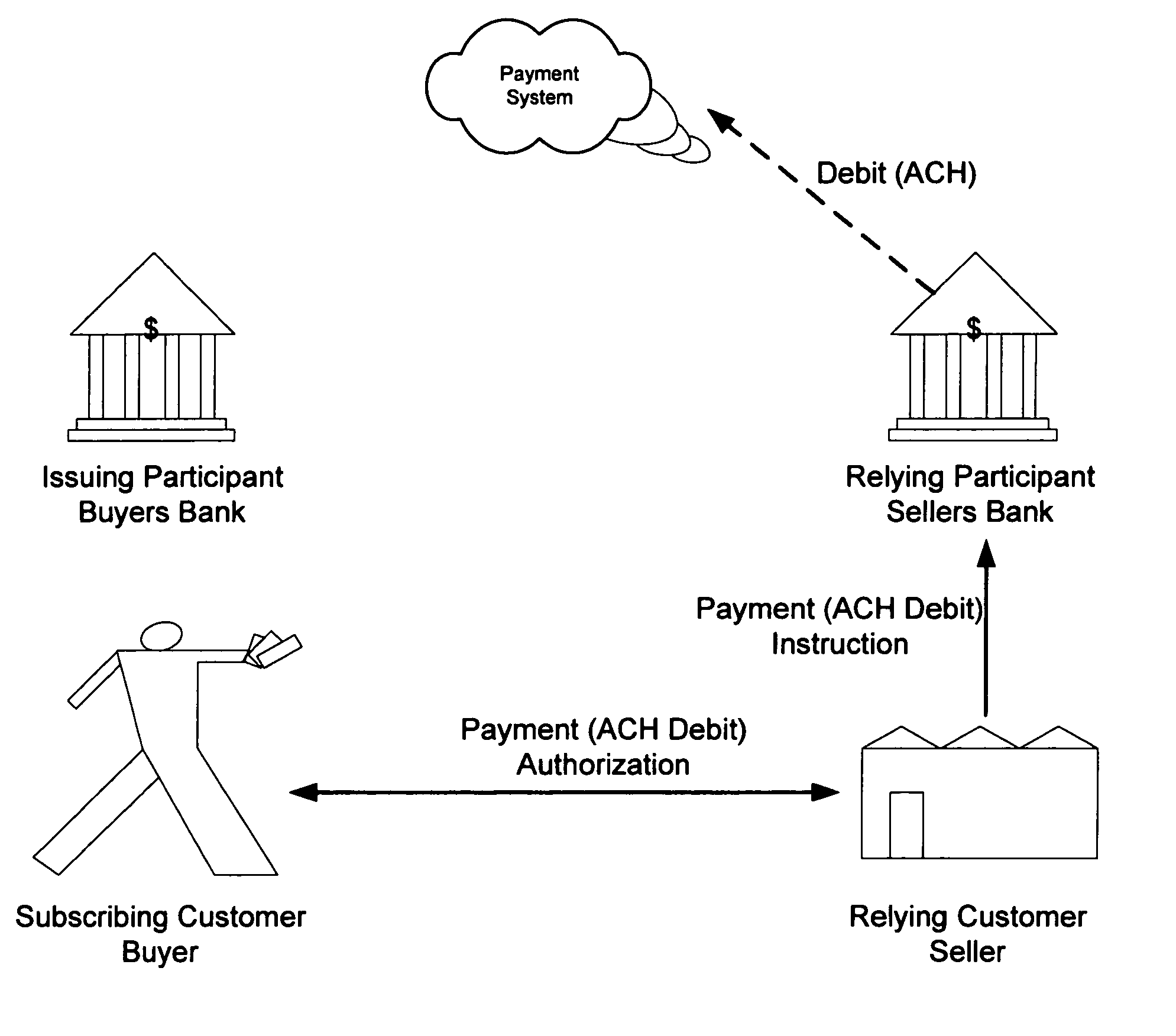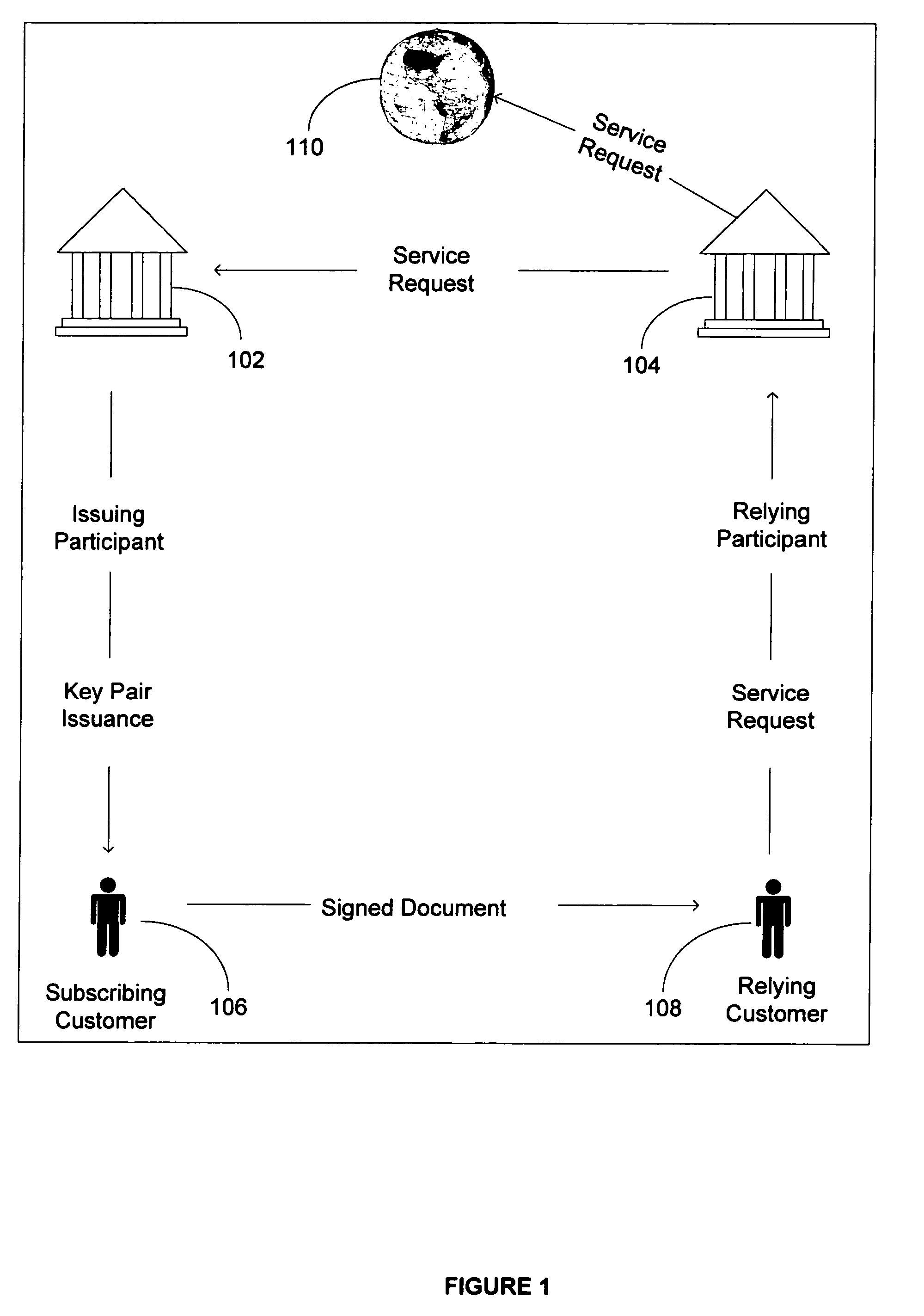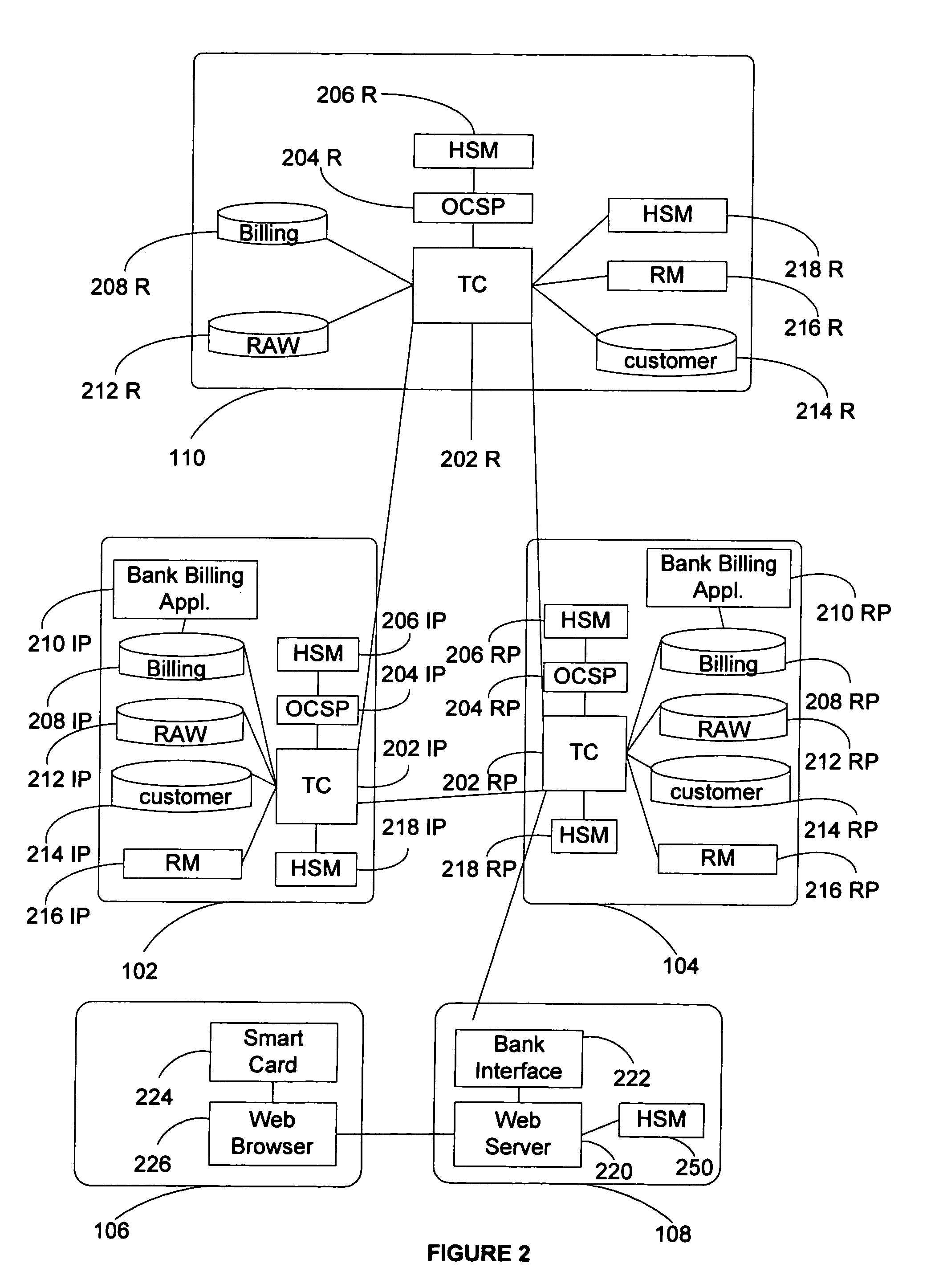System and method for providing payment services in electronic commerce
a payment service and electronic commerce technology, applied in the field of electronic commerce facilitation, can solve the problems of inability to easily confirm create new challenges in the relationship setting of the contracting party world, and inability to achieve the identity and authority of the other party, etc., to achieve efficient work flow, improve timing and knowledge, and improve efficiency
- Summary
- Abstract
- Description
- Claims
- Application Information
AI Technical Summary
Benefits of technology
Problems solved by technology
Method used
Image
Examples
Embodiment Construction
System Architecture and Technical Characteristics
[0026] The present disclosure relates to a system that allows financial institutions to securely provide payment services to their customers. In a preferred embodiment, these services may be provided within the context of a four-corner trust model. A preferred embodiment of the four-corner model employed by the present system is shown in FIG. 1.
[0027] As shown in FIG. 1, the four-corner model comprises a first institution 102 and a second institution 104. First institution 102 is referred to as the “issuing participant” because it is a participant in the present system and issues digital certificates to its customers, as described below. Second institution 104 is referred to as the “relying participant” because it is a participant in the present system and its customers rely on representations made by issuing participant 102 and issuing participant 102's customers, as described below. Participants 102, 104 are typically banks or ot...
PUM
 Login to View More
Login to View More Abstract
Description
Claims
Application Information
 Login to View More
Login to View More - R&D
- Intellectual Property
- Life Sciences
- Materials
- Tech Scout
- Unparalleled Data Quality
- Higher Quality Content
- 60% Fewer Hallucinations
Browse by: Latest US Patents, China's latest patents, Technical Efficacy Thesaurus, Application Domain, Technology Topic, Popular Technical Reports.
© 2025 PatSnap. All rights reserved.Legal|Privacy policy|Modern Slavery Act Transparency Statement|Sitemap|About US| Contact US: help@patsnap.com



